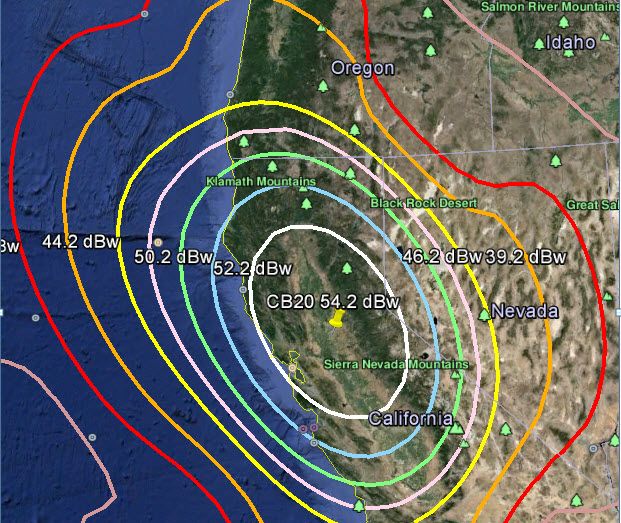Forum Discussion
CA_Traveler
Feb 06, 2014Explorer III
Local spot beam coverage is not set to cover just a zip code. Instead the beam coverage is determined by satellite technology, population areas and FCC rules relating to competitive coverage considering local TV stations and perhaps many other factors. Spot beams typically cover hundreds of miles and may overlap other spot beams.
But a zip code or address is used to determine the location of the dish and provides the parameters necessary to aim the dish. The dish location information also is used by satellite providers to set which channels your receiver will receive.
Your location in the spot beam and the size of your dish will determine how far you can travel in a given direction and still receive your channels. It might be a few miles in one direction and hundreds of miles in another direction. I’ve received DTV San Francisco locals reliably in Eugene, OR (about 500 miles) and only at night in Portland, OR. A spot beam has the highest signal strength at its center and the signal strength reduces as the dish is located away from the center. Larger dishes are more capable of receiving an adequate signal as the signal gets weaker.
As an example notice the coverage of one DTV spot beam for San Francisco below. This beam covers much of Northern California and includes other states. The author estimates that inside the pink ring is adequate for standard slimline dish reception.
You can see other beam maps click here provided you have installed Google Earth.

But a zip code or address is used to determine the location of the dish and provides the parameters necessary to aim the dish. The dish location information also is used by satellite providers to set which channels your receiver will receive.
Your location in the spot beam and the size of your dish will determine how far you can travel in a given direction and still receive your channels. It might be a few miles in one direction and hundreds of miles in another direction. I’ve received DTV San Francisco locals reliably in Eugene, OR (about 500 miles) and only at night in Portland, OR. A spot beam has the highest signal strength at its center and the signal strength reduces as the dish is located away from the center. Larger dishes are more capable of receiving an adequate signal as the signal gets weaker.
As an example notice the coverage of one DTV spot beam for San Francisco below. This beam covers much of Northern California and includes other states. The author estimates that inside the pink ring is adequate for standard slimline dish reception.
You can see other beam maps click here provided you have installed Google Earth.

About RV Must Haves
Have a product you cannot live without? Share it with the community!8,803 PostsLatest Activity: Dec 11, 2025